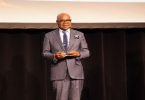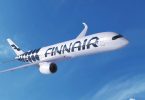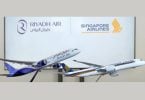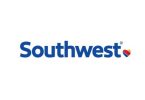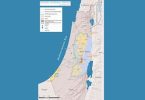On September 13, Routes and AirTransportNews held a conference on “The Importance of Airline Alliances” that took place alongside with the 15th World Route Development Forum in Beijing. The panel consisted of exceptional academics and professionals from the aviation industry – Mr. Vijay Poonoosamy, vice president, international affairs, Etihad Airways (moderator); Mr. Jeffrey Goh, general counsel VP, corporate services, Star Alliance; and Dr. Kostas Iatrou, managing director, AirTransportNews and co-author of the book “Airline Choices for the future: From Alliances to Mergers.”
The panel had an in-depth discussion on the benefits that global alliances provide to passengers and airlines, and the challenges that they currently face. Mr. Poonoosamy made an introduction on the global alliance’s history and current situation. He referred to the three existing alliances and to the benefits that they offer to their members: the optimization of network, cost reductions, and the increasing number of passengers. He also referred to the drawbacks and to the strict regulations and antitrust rules that alliances have to comply with.
Mr. Goh, analyzed the importance of alliances to airlines through the network and cost reduction opportunities that they offer. In addition, he indicated that airlines are able to overcome regulatory barriers and can access markets without actually serving them. He stated that the main driver of Star Alliance is the network opportunities. He indicated that alliances were driven particularly from revenue growth rather than cost reduction. However, as alliances are ,they have been able to find areas where they can create synergies, for example, in fuel costs, they can perform collective purchasing and participate in collective activities. Alliances also offer strategic opportunities for cost reduction, for example, through infrastructure and inventories. According to Mr. Goh, an important benefit deriving from alliances is the exchange of IT practices and the ability to push innovation between airlines. Airlines can meet the business requirement and benefit from the cost reduction synergies. In comparison to mergers and acquisitions, Mr. Goh stated that alliances are the next best thing after mergers. He said that mergers have a value proposition, but even when airlines merge, they, too, decide to join an alliance, for example, as Air France and KLM have done.
He then analyzed the opportunities offered to passengers. The main benefits are related to the airport facilities that passengers enjoy, the frequent flyer programs, and corporate flexibility. He referred to the role that alliances should play in the current landscape regarding improving the passengers’ benefits, for example, to consolidate premium passenger lounges in airports, to streamline the passenger experience, and to create connection centers, such as having a Star Alliance escort meet the passenger at the gate to guide him/her to the connecting gate when the connection time is under 45 minutes. Alliances, however, have not always agreed on this matter with airports, but due to space optimization, many airports align with that request.
He pointed out that cost reduction opportunities, in addition to consolidation, creates benefits both for the passengers and the airlines. He also referred to the frequent flyer program’s advantages and to corporate travel flexibility, for example, when a corporate executive travels from London to Beijing, he/she has the greater ability to combine fares and times and flights with different carriers.
In terms of how an alliance operates, Mr. Goh stated that it depends on the governance of the alliance. He said, “It is not easy to have the participation and the engagement of all the airlines in an alliance.”
He analyzed several challenges that alliances are facing. One of the major challenges that all alliances face is the issue of growth and to which point airlines can strengthen collaboration, to which point does an alliance grow, and how an alliance can attract more airlines. He stated that all these are related with the ethos of each alliance. Robust governance and harmonization of specifications are key and are not always achieved. Another challenge is related to the optimization of cost-saving opportunities. An important issue that Mr. Goh highlighted is the point where an alliance decides to compromise and allow individualization to continue.
Mr. Goh concluded, “Alliances are here to stay because of the value proposition that they present, and we will continue to see alliances shaping the future of the aviation industry.”
Dr. Iatrou presented an academic and objective perspective of the alliances, since he has not been part of an alliance but has made extensive studies on that issue.
He presented the reasons that alliances were initially formed. The main driver, according to Dr. Iatrou, was the increased coverage and the benefits and market power that accrued from large networks and geographical spread. In addition, the airline industry was highly restricted, and airlines were unable to grow through acquisitions. Therefore, alliances provided the way to overcome these regulatory barriers. They also provided the opportunity to airlines to operate in more markets and thus improve their bottom line financially and take advantage of economies of scale and scope. Through the alliances, airlines are able to increase the number of passengers and improve their capacity utilization, because they offer greater convenience, a larger network, and greater frequency of flights. Dr. Iatrou stated that passenger traffic increase was observed in combination with the creation of a global FFP. Dr. Iatrou emphasized the benefits deriving from economies of scale. He indicated that alliances share the costs among its allied members by eliminating duplication of operations, sharing the use of airport facilities and ground staff, and mutual handling of baggage transfers and passenger check-in. In addition, they perform cooperative advertising and promotional campaigns and have common sales offices. He stated that the power and the mere size of an alliance enables it to negotiate from a position of force and to sign better deals and achieve better prices.
He analyzed the benefits deriving from the network size. He pointed out that the airline is guaranteed a global advertising campaign and promotion since its logo appears under that of the alliance even in countries and areas that are not serviced by the airline. The airline offers to the alliance the additional network of the service that it provides to the local market and does not need to invest huge amounts of money to enter new markets or incur additional capital investment, landing fees, advertising outlays, or engage in price wars.
From the passenger perspective, the advantages derived from alliances are a lot. They enjoy higher frequency, improved transfer times, larger number of destinations available, improved ground and in-flight service levels, and more attractive loyalty schemes.
However, Dr. Iatrou referred to a number of disadvantages for the airlines that derive from the fact that alliances are complex, heterogeneous, and dynamic networks that are highly asymmetric, since they consist of airlines of different sizes and market power. This mix of airline members have conflicting expectations and pursue conflicting agreements, which results in coordination problems. Furthermore, there is a big risk for the airline members losing their independence and identity. In addition, for airlines that want to join, there is an initial cost that has to be taken into account in order to harmonize their IT systems.
He referred to several major unaligned carriers that either have not decided which alliance best fits their interests (such as Malaysia Airlines) or wish to remain independent (such as Emirates, Qatar, Etihad, and Virgin Atlantic)
Dr. Iatrou pointed out that the deeper the integration is, the more the benefits are, however, few alliance partners have the ambition to go as far as the unified model requires and stated that not all alliances are necessarily successful.
Why do eTurboNews journalists need your support?
Powerful corporations, organizations and governments control so much information that reaches the public- including in our travel and tourism industry.
eTurboNews is trying to avoid the trap that befalls much of the U.S. and international media. As a global news organization, we fight to keep our independence when reporting relevant news. Research and fairness in journalism also cost money!
YOU are our inspiration. You could help a little more to keep us going and click here: A free luxury cruise, a first-class airline ticket, or a stay in a 5-star resort could be YOUR reward.




